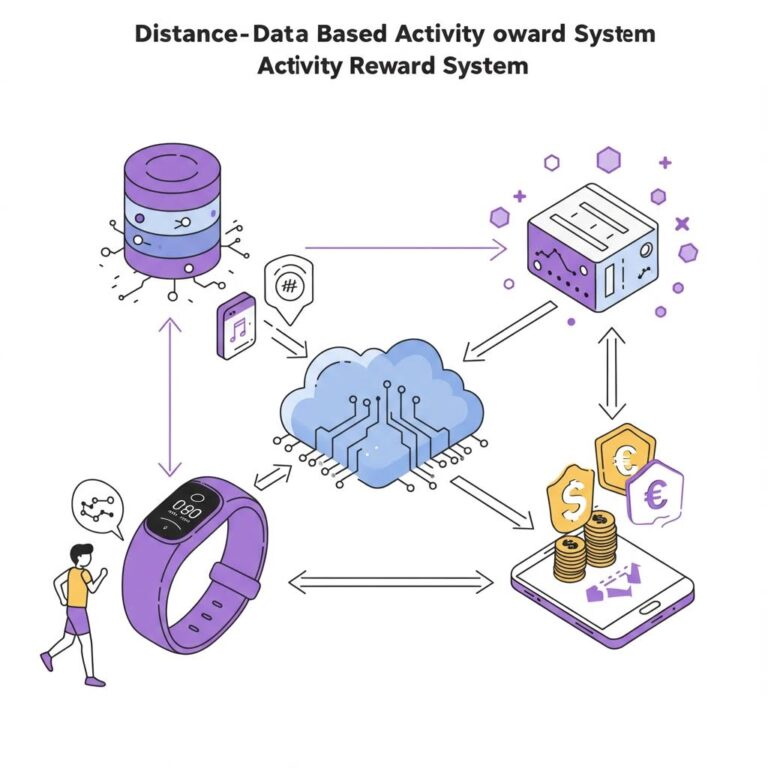The Psychology of “The Law of Small Numbers”: Why We Overgeneralize From Limited Experience
Understanding Cognitive Bias in Pattern Recognition
Our brains are hardwired to identify patterns from limited data, leading to a powerful cognitive bias known as “the law of small numbers.” This psychological tendency causes individuals to draw sweeping conclusions from minimal experiences, treating small samples as fully representative of larger populations. The impact of this cognitive shortcut extends across multiple domains, from critical business decisions to vital healthcare choices. 검증된 카지노사이트
Impact on Decision-Making Processes
The tendency to overgeneralize from limited experience can significantly affect:
- Strategic planning in business environments
- Risk assessment in financial decisions
- Clinical judgments in medical settings
- Personal relationship evaluations
- Market analysis and consumer behavior predictions
Overcoming Sample Size Bias
Structured Analysis Methods
Implementing systematic evaluation procedures helps counter instinctive generalizations. Decision-makers should:
- Establish minimum sample size requirements
- Document multiple data points before drawing conclusions
- Utilize statistical validation techniques
- Incorporate diverse perspectives and experiences
Critical Reflection Protocols
Mandatory reflection periods serve as crucial checkpoints in the decision-making process, allowing for:
- Data verification from multiple sources
- Assumption testing against larger datasets
- Bias identification and correction
- Pattern validation across broader populations
Building Better Decision Frameworks
To overcome the law of small numbers, organizations and individuals must develop:
- Robust analytical systems
- Evidence-based evaluation procedures
- Cross-validation methods
- Long-term data collection strategies
Understanding and actively countering this cognitive bias leads to more accurate assessments and improved decision-making outcomes across all domains.
Understanding Small Sample Size Bias
Understanding Small Sample Size Bias: A Statistical Analysis Guide
The Impact of Small Sample Size on Statistical Accuracy
Small sample size bias represents a critical challenge in statistical analysis and decision-making. This cognitive error occurs when individuals draw broad conclusions from limited data points, demonstrating what researchers term “the law of small numbers.”
The human brain’s pattern-recognition tendencies often lead to premature inferences, particularly when working with statistically insignificant sample sizes.
Key Manifestations of Small Sample Size Bias
Overestimation of Sample Representativeness
Statistical representativeness becomes compromised when analysts assume small samples accurately reflect broader population characteristics. This fundamental error can lead to skewed interpretations and flawed strategic decisions.
Underestimation of Sample Variability
Small samples typically display greater variability than larger datasets, yet decision-makers often expect consistent results across limited observations. This statistical variance misconception can significantly impact research validity.
Excessive Confidence in Limited Data
The tendency to place unwarranted trust in conclusions drawn from minimal data points represents a serious threat to accurate statistical analysis. This overconfidence bias frequently leads to premature generalizations and unreliable findings.
Strategies for Mitigating Small Sample Size Bias
Sample size calculations and statistical power analysis serve as essential tools for combating small sample size bias.
Implementing rigorous statistical methodology requires careful consideration of minimum sample size requirements and confidence intervals.
Effective analysis demands systematic evaluation of data sufficiency before drawing substantive conclusions.
Best Practices for Statistical Analysis
- Determine required sample size before analysis
- Calculate statistical power for meaningful results
- Evaluate confidence intervals thoroughly
- Consider population variance in sampling decisions
- Implement robust statistical testing methods
This comprehensive approach ensures more reliable statistical inference and helps prevent the common pitfall of over-interpreting limited datasets.
Real-World Examples and Consequences
Real-World Examples of Small Sample Size Bias and Their Consequences
Critical Impact Across Industries
Small sample size bias creates significant challenges across multiple sectors, leading to costly errors and flawed decision-making.
In pharmaceutical development, companies have faced severe setbacks after rushing drugs to market based on limited clinical trials, only to discover adverse effects when distributed to larger populations.
Business ventures frequently falter when strategic decisions rely on insufficient customer feedback, resulting in misaligned products and services.
Healthcare and Medical Research Implications
The medical field demonstrates some of the most consequential examples of sampling bias effects.
Healthcare professionals may alter their treatment protocols based on outcomes from limited patient groups, potentially overlooking comprehensive statistical evidence.
This can lead to suboptimal patient care and treatment decisions that don’t reflect broader population needs.
Educational and Scientific Research Challenges
Research validity often suffers from small sample size issues.
Educational institutions implement systemic changes based on limited pilot programs, affecting thousands of students without adequate supporting data.
In academic research, studies published with insufficient sample sizes frequently fail to replicate in larger-scale investigations, undermining scientific progress and reliability.
Best Practices for Sample Size Management
To mitigate these risks, organizations must:
- Implement robust sampling methodologies
- Ensure statistical significance in research design
- Gather comprehensive data sets before major decisions
- Conduct thorough validation studies
- Maintain ongoing monitoring of outcomes
This systematic approach helps prevent the costly consequences of sampling errors and ensures more reliable, data-driven decision-making across all sectors.
Why Our Brains Jump Ship
Why Our Brains Jump Ship: Understanding Cognitive Shortcuts
The Evolution of Pattern Recognition
The human brain, despite our advanced understanding of statistics, remains fundamentally wired to extract meaning from small samples.
This cognitive predisposition stems directly from our evolutionary heritage, where rapid pattern recognition determined survival.
Our ancestors’ ability to make quick judgments from limited data points became deeply embedded in our neural circuitry.
Core Mechanisms Behind Statistical Abandonment
1. Cognitive Ease
Our neural pathways naturally gravitate toward mental shortcuts, making small, manageable samples more appealing than comprehensive statistical analysis.
This cognitive efficiency served our ancestors well but can lead to significant errors in modern decision-making.
2. Confirmation Bias
When limited data points align with pre-existing beliefs, our brains activate confirmation bias, reinforcing these selective observations while disregarding contradictory evidence.
This psychological filter creates a self-reinforcing cycle of biased interpretation.
3. Availability Heuristic
The availability heuristic plays a crucial role in how we process information, giving disproportionate weight to easily remembered examples.
This mental shortcut often leads to overestimating the probability of events that are more memorable or recent.
The Dual Processing Challenge
Our cognitive architecture operates on two distinct levels: a rational system that understands statistical principles and an intuitive system that reflexively draws conclusions from limited data.
This dual processing creates an internal conflict between our analytical knowledge and instinctive responses, making it challenging to maintain consistent statistical thinking even when we’re aware of these cognitive biases.
Common Scenarios in Daily Life
Understanding Small-Number Thinking in Daily Life
The Impact of Limited Data on Decision Making
Small-number thinking fundamentally shapes our daily decisions and judgments.
From evaluating restaurants based on single experiences to forming lasting impressions from brief encounters, this cognitive pattern influences countless aspects of our lives.
The tendency to draw broad conclusions from limited data points affects both personal and professional spheres.
Common Manifestations in Everyday Scenarios
Consumer Behavior and Service Evaluation
Consumer decisions frequently demonstrate small-number bias.
A single negative experience with a product can lead to complete brand rejection, while one outstanding service interaction might generate unwavering loyalty.
This pattern extends to service evaluation, where individuals often make definitive judgments about:
- Restaurant quality from one meal
- Healthcare providers from single consultations
- Retail establishments from isolated visits
Professional and Social Assessment
Workplace dynamics and social interactions similarly suffer from small-number thinking.
Job candidates face evaluation based on brief interviews, while potential friendships dissolve after momentary awkward exchanges.
These snap judgments can significantly impact:
- Professional networking opportunities
- Team collaboration effectiveness
- Social circle development
The Self-Reinforcing Nature of Limited Data
Confirmation bias amplifies small-number thinking through self-reinforcing patterns.
When individuals form early conclusions, they often:
- Avoid situations that might contradict initial impressions
- Selectively notice information supporting their existing beliefs
- Miss opportunities to gather contrary evidence
This cycle perpetuates oversimplified views and prevents the accumulation of comprehensive data that could lead to more accurate assessments.
Overcoming Quick Judgment Tendencies
Overcoming Quick Judgment Tendencies: A Comprehensive Guide
Understanding Cognitive Bias in Decision-Making
Breaking free from quick judgment tendencies requires systematic rewiring of our cognitive patterns.
The most effective approach involves implementing a three-step decision framework: pause, question, and expand.
When encountering situations that trigger immediate conclusions, implement a mandatory 30-second reflection period before forming any judgment.
Implementing the Pause-Question-Expand Framework
The Power of Strategic Pausing
During the critical pause phase, practice mindful observation rather than immediate reaction.
This creates mental space for more balanced evaluation and reduces emotional interference in decision-making processes.
Systematic Questioning Techniques
Question initial reactions through structured analysis:
- Examine supporting evidence
- Identify potential counter-evidence
- Evaluate sample size adequacy
- Consider alternative explanations
- Assess personal biases
Expanding Perspective Through Active Research
Broaden your cognitive framework by:
- Seeking contradicting examples
- Exploring alternative viewpoints
- Analyzing opposing arguments
- Gathering diverse perspectives
- Documenting varied experiences
Maintaining Decision Quality Through Documentation
Implement a decision journal system to track judgment patterns and outcomes. Record:
- Initial impressions
- Supporting evidence
- Final decisions
- Actual outcomes
- Learning points
This systematic documentation creates a feedback loop for continuous improvement in decision-making accuracy and reduces cognitive bias over time.
#
Building Better Decision-Making Habits
# Building Better Decision-Making Habits
Through consistent cognitive practice, these analytical habits become automatic safeguards against flawed reasoning and hasty conclusions.
Developing robust decision-making frameworks requires dedication to examining evidence thoroughly before drawing conclusions.
The transformation occurs when these critical thinking patterns become so deeply ingrained that they automatically activate when processing new information.
Mental models and systematic analysis serve as powerful tools for evaluating complex situations.
By establishing a foundation of evidence-based reasoning and structured problem-solving, individuals can significantly enhance their decision quality across both professional and personal domains.
The emphasis lies not on achieving perfect decisions but on implementing reliable analytical processes that consistently produce well-reasoned outcomes.
To reinforce these cognitive frameworks, focus on:
- Pattern recognition in data analysis
- Bias identification and mitigation
- Systematic evaluation of evidence
- Structured decision protocols
These analytical safeguards become second nature through deliberate practice, creating a robust defense against cognitive shortcuts and emotional reasoning.
The goal is to establish default thinking patterns that automatically trigger comprehensive analysis when encountering new information or complex decisions.



